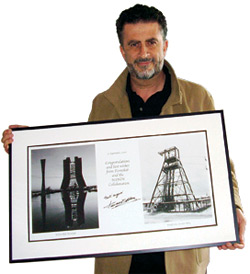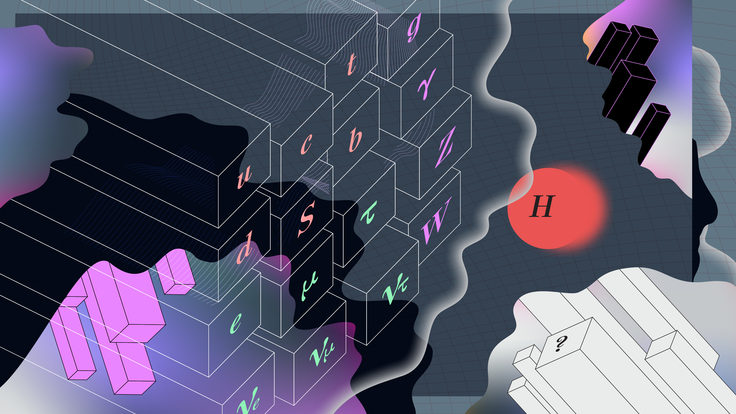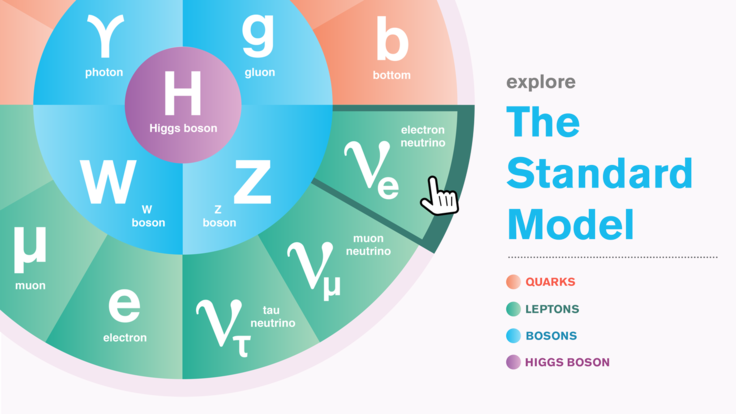 |
|
Photo: Laboratori Nazionali del Gran Sasso |
It absolutely had to arrive on time
The inaugural beam for the CERN Neutrinos to Gran Sasso (CNGS) project took just 2.5 milliseconds to fly 732 km through the earth from Geneva, Switzerland, to its destination at the Gran Sasso underground laboratory near Rome on Monday, September 11, 2006. But in preparation for the dedication ceremonies at Istituto Nazionale di Fisica Nucleare that day, a congratulatory gift had to make its own quick transit by air across ten times that distance (more than 7100 km), from Fermilab to Gran Sasso.
The gift was a framed poster, featuring a picture of Fermilab's Wilson Hall at sunset, mounted next to an image of the mine-head for the Soudan Underground Laboratory in northern Minnesota—representing the beam origin and detector hall for Fermilab's NuMI/MINOS beamline and experiment, covering a similar distance through the earth as the CNGS beam. Fermilab director Pier Oddone had written his congratulations and best wishes (in Italian) across the center, before the framed greeting flew overnight from Chicago to Rome. "We had it all packed up and found out they needed it for some kind of presentation the next day," says Fermilab shipping manager Claudie King. "We put it on the next flight." The greeting arrived on time and was presented to Eugenio Coccia, director of the Laboratori Nazionali del Gran Sasso (photo).
Like Fermilab's beamline, CNGS will help physicists understand the role that the puzzling neutrinos played in the early universe. "Of all the known particles, neutrinos are the most mysterious," says Oddone. "In the years ahead, neutrino experiments at Gran Sasso and around the world will discover the fascinating secrets of neutrinos and how they shaped the universe we live in."
Siri Steiner
Click here to download the pdf version of this article.






